Ube or Taro: Which Purple Favorite Should You Choose?
Ube and taro have sparked quite the debate among food enthusiasts worldwide.
Purple and white root vegetables bring unique flavors to countless desserts across Asian cuisines.
Many people confuse them due to their similar appearances and uses in sweet treats like ice cream and bubble tea.
Both ingredients have ancient cultural histories dating back centuries in traditional cooking.
The rising popularity of these roots in Western dessert shops has only intensified curiosity about their differences and best uses - something you can appreciate once sampling both side by side.
The Overview of Ube and Taro
Ube and taro remain a mystery to many people outside Asian cuisine. Most folks instantly connect purple colors with eggplants or grapes when thinking about food.
These two root vegetables stand out as key ingredients in countless delicious purple dishes across Asia.
As these ingredients gain popularity worldwide, more people are discovering how these purple roots can add excitement to everyday meals.
Here are the overview of ube and taro.
Ube
Taro
Ube vs Taro: Exploring the Differences
Here is a table to show the differences between ube and taro.
| Category | Ube (Purple Yam) | Taro (Colocasia Esculenta) |
| Origin | Grown globally, especially in Philippines, West Africa, and South America. Brought to North America in 1500s. | One of the oldest crops; native to tropical Asia, Papua New Guinea, and Hawaii. |
| Flavor | Sweet, vanilla- or pistachio-like, mellow and nutty; dessert-friendly. | Mild sweetness with a gentle vanilla hint; less intense than Ube. |
| Texture (Cooked) | Soft, dense, custard-like; suitable for jellies, jams, and sweet spreads. | Creamy, slightly starchy; good for both sweet and savory dishes. |
| Appearance | Flesh: white to deep purple; Skin: grayish-brown; Shape: round to cylindrical. | Flesh: white/cream with purple specks; Skin: hairy brown; Corms: large. |
| Culinary Uses | Mostly in desserts: ice cream, halaya, cakes, pancakes; iconic in Filipino cuisine. | Wide range: bubble tea, fries, soups, cakes, snacks, and savory dishes. |
| Nutrition (per serving) | 140 calories, 27g carbs, 1g protein, 0.1g fat, 4g fiber, 40% Vit C DV, 4% Vit A DV | 187 calories, 39g carbs, 1g protein, 0.1g fat, 6.7g fiber, 11% Vit C DV, 19% Vit E DV |
Origin
Ube and taro hold a special place in Asian culture while serving as key food sources in many regions worldwide. These root vegetables might look similar at first, but each has its own distinct flavor and color profile.
Ube gives desserts that eye-catching purple shade, while taro offers a more subtle taste experience. Many people mix them up because of their shared purple tones, but knowing the difference helps when you're ordering at restaurants or cooking at home.
The rich history behind these ingredients connects countless communities across continents.
Flavor
Flavor differences set ube and taro apart, even though they may look alike at first glance. Ube has a naturally sweet, vanilla-like taste that makes it perfect for desserts without needing much added sugar.
Taro, meanwhile, offers a more subtle, nutty flavor with earthy undertones that works well in both sweet treats and savory dishes. Many people describe taro as having hints of potato mixed with mild vanilla, while ube delivers a distinctly sweet experience similar to white chocolate or vanilla.
These unique taste profiles explain why chefs around the world choose ube for colorful cakes and ice cream, while taro often appears in bubble tea, chips, and creamy side dishes.
Texture
Raw ube has a denser, woodier feel while taro seems more starchy and tender to the touch. Once cooked, these differences become even more noticeable in your dishes.
Ube transforms into a smooth, creamy texture that works beautifully in desserts like ice cream and cakes. Taro keeps some of its structure when cooked, with a slightly grainy quality that makes it perfect for savory dishes and snacks where you want a bit more substance.
Many people love how taro holds up in stir-fries and curries without falling apart.
Appearances
Purple foods like ube and taro can turn any meal into something special. These colorful ingredients add a fun twist to desserts, drinks, and savory dishes without much effort.
Many people love how they bring both unusual hues and unique flavors to the table. Ube offers a gentle sweetness that works perfectly in ice cream or cakes, while taro has a nutty taste that's amazing in both chips and bubble tea.
Your kitchen creations will stand out at any gathering when you include these purple powerhouses. Several restaurants now feature these ingredients on their menus because customers can't resist taking photos before digging in.
Culinary Uses
Ube is primarily used in sweet dishes, especially in Filipino cuisine where it stars in classics like Ube Halaya, ice cream, cakes, and filled pastries. Its vibrant purple hue and naturally sweet, vanilla-like flavor make it a favorite for desserts across Asia and beyond.
In contrast, taro is more versatile and used in both sweet and savory dishes, such as bubble tea, cupcakes, soups, and fried snacks. Its mild, nutty taste and creamy texture allow it to pair well with meats, fish, or be baked and mashed like sweet potatoes.
While both are root vegetables with a sweet edge, their best uses depend on the desired flavor intensity and dish type.
Nutrition
Purple vegetables like ube and taro have become stars in modern health-conscious kitchens for good reasons. Both offer plenty of calories to keep you energized, essential vitamins that support your body, and fiber that helps digestion.
Ube brings a sweet, vanilla-like taste with its deep purple hue while taro has a more mild, nutty flavor with its light purple color inside. People who want more plant-based options in their meals often reach for these versatile roots since they work well in both sweet treats and savory dishes without much fuss.
How to Prep Ube and Taro Like a Pro
Root vegetables require a bit more know-how than common ones like carrots or potatoes, especially for beginners.
Once you understand the basic methods for cleaning, cutting, and cooking these hearty gems, they become much easier to work with in daily meals.
Good handling brings out their natural flavors and ensures they complement rather than overpower your dishes.
Raw Ube Preparation
Purple yams have a similar texture to sweet potatoes and can be prepared in two simple ways after washing and peeling. For dishes that need defined pieces, you can chop them into small chip-sized chunks, perfect for making fries or roasted bites.
If you want a smoother consistency, grabbing a knife, scissors, or spoon to scrape the flesh works wonderfully - this method creates a thicker, more manageable mixture that's ideal for soups and jams.
The scraping technique helps blend the ube more thoroughly into your recipes, giving them that distinctive purple color and sweet flavor that makes your dishes stand out.
Raw Taro Preparation
Taro root requires thorough cooking since its raw flesh contains calcium oxalate that may cause uncomfortable itchy reactions in your mouth and throat. Proper preparation begins with carefully peeling the skin using a knife or vegetable peeler.
After removing the outer layer, a good rinse under cold water helps eliminate any remaining dirt or toxins. Protective gloves should remain on your hands during the entire process, even when cutting the taro into your desired shapes for various dishes.
The final important rule for delicious taro dishes always comes back to complete cooking, which neutralizes the natural compounds that could otherwise cause irritation.
Can I Substitute Ube for Taro (and Vice Versa)
You can sometimes swap ube and taro, but they aren’t perfect substitutes because their flavors and textures differ. In desserts like ice creams, cakes, or puddings, you can often swap one for the other if you adjust sweetness and maybe add a bit of dairy or thickener to match mouthfeel.
However, the color and subtle taste to shift. For savory uses, they’re less interchangeable because taro’s texture holds up differently and isn’t as sweet as ube.
If you do substitute, start with a 1:1 swap and then tweak sugar or liquid to get the balance you want; for taro in a typically sweet ube dish you might add a touch more sugar, and for ube in a taro-forward recipe you might tone down sweetness.
Also watch cooking time: taro can become gluey if overcooked, whereas ube stays a bit drier.
The Health Perks of Ube and Taro
More than just pretty ingredients, ube and taro boost both your meals and health in amazing ways. These purple powerhouses add color and taste while secretly packing wellness benefits you might not expect.
Their natural compounds can help your body fight off sickness, give you energy, and even balance your mood.
Got Questions? We’ve Got Solutions
1. Can I find ube and taro in regular grocery stores?
Ube is harder to find in regular stores but check Asian markets for fresh roots or frozen grated ube. Taro is more widely available in both Asian markets and some mainstream grocery stores in the produce section.
2. Which one is sweeter?
Ube has a naturally sweeter flavor with vanilla and pistachio notes, while taro is more subtle and nutty. This is why ube is often preferred in desserts without needing as much added sugar.
3. Are ube and taro healthy?
Both are nutritious root vegetables rich in fiber. Ube contains antioxidants that give it the purple color, while taro is higher in potassium and vitamin E. Both can be part of a balanced diet.
4. How should I store these root vegetables?
Store both unwashed in a cool, dark place (not refrigerated) for up to two weeks. Once cut, wrap tightly and refrigerate for 3-4 days. Frozen prepared ube can last months.


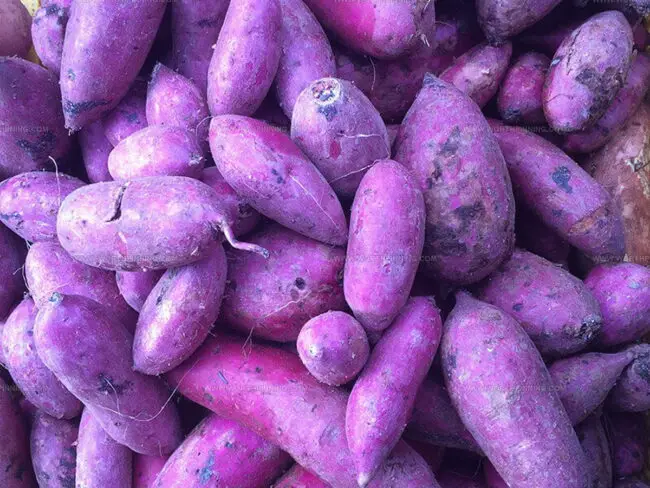
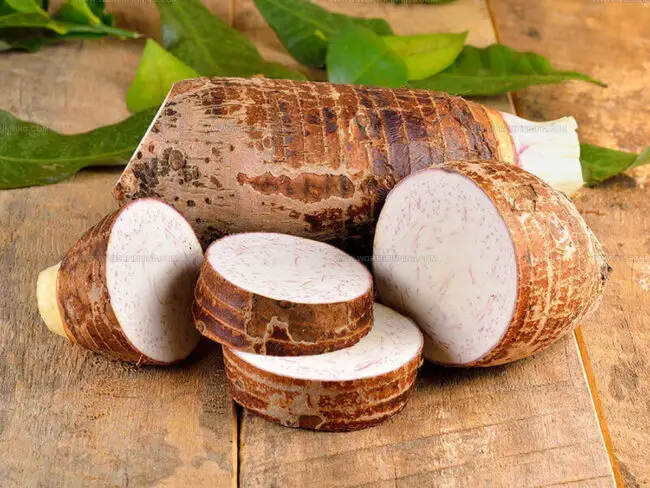
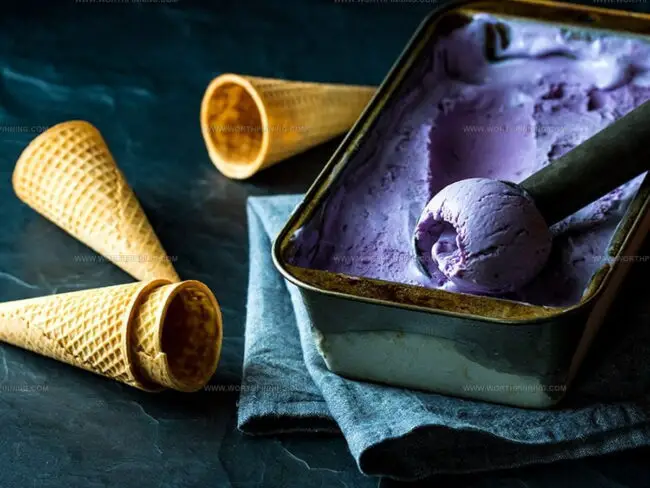
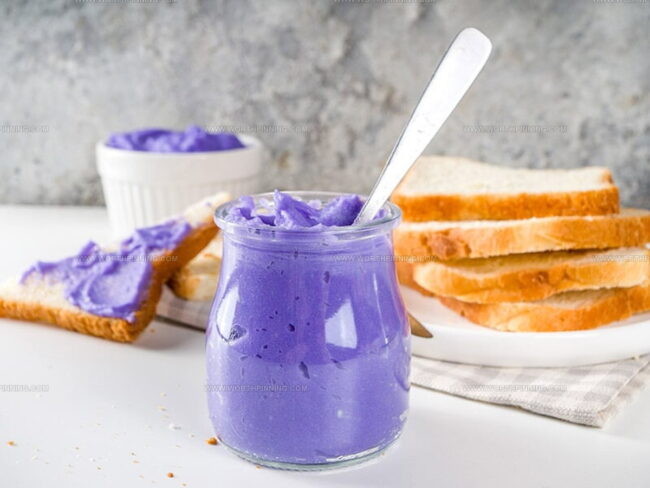
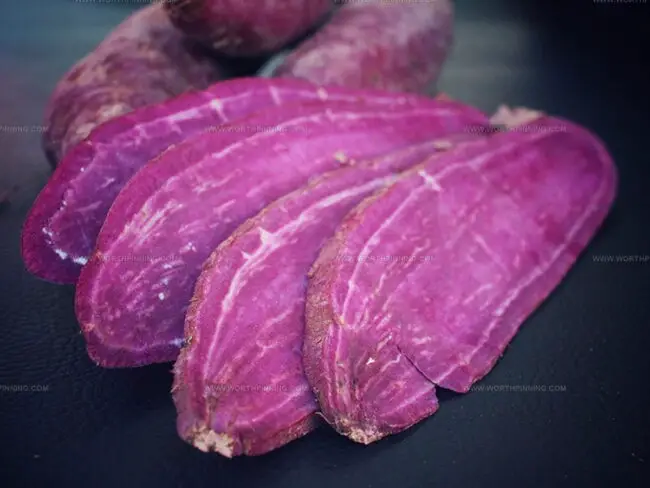
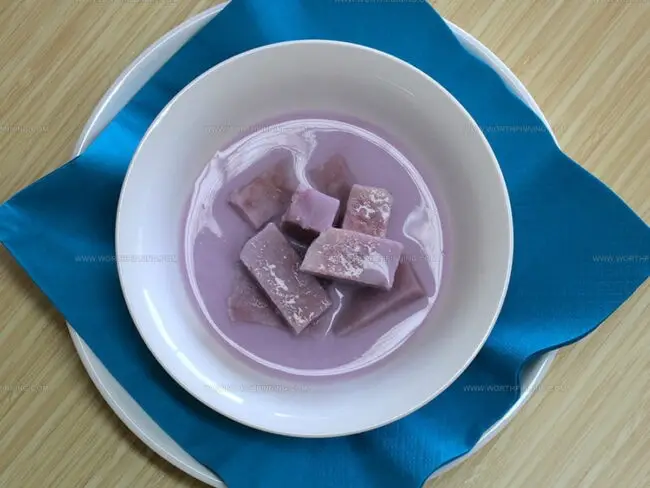
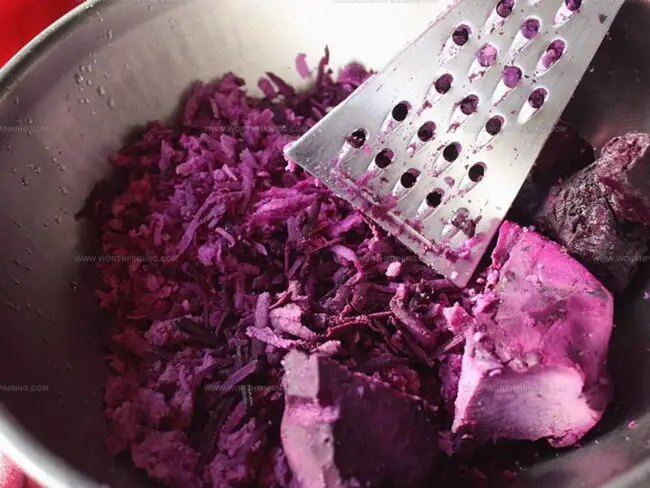
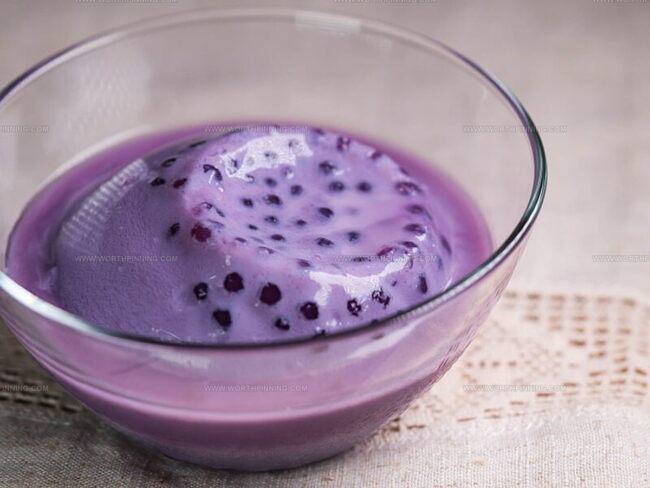
Sophia Rivera
Recipe Developer & Kitchen Tips Specialist
Expertise
Education
Austin Community College
San Antonio Culinary Institute
Sophia’s passion for baking began in her family kitchen, where she spent hours experimenting with new recipes. With a background in baking and pastry arts, she loves making desserts that are as visually stunning as they are delicious.
Sophia is all about using seasonal, locally sourced ingredients to create treats that everyone will enjoy. When she’s not creating mouth-watering desserts, you can find her gardening, making new recipes, or enjoying a relaxing afternoon with her family.